Recommendations for rail travel to rural areas in Japan
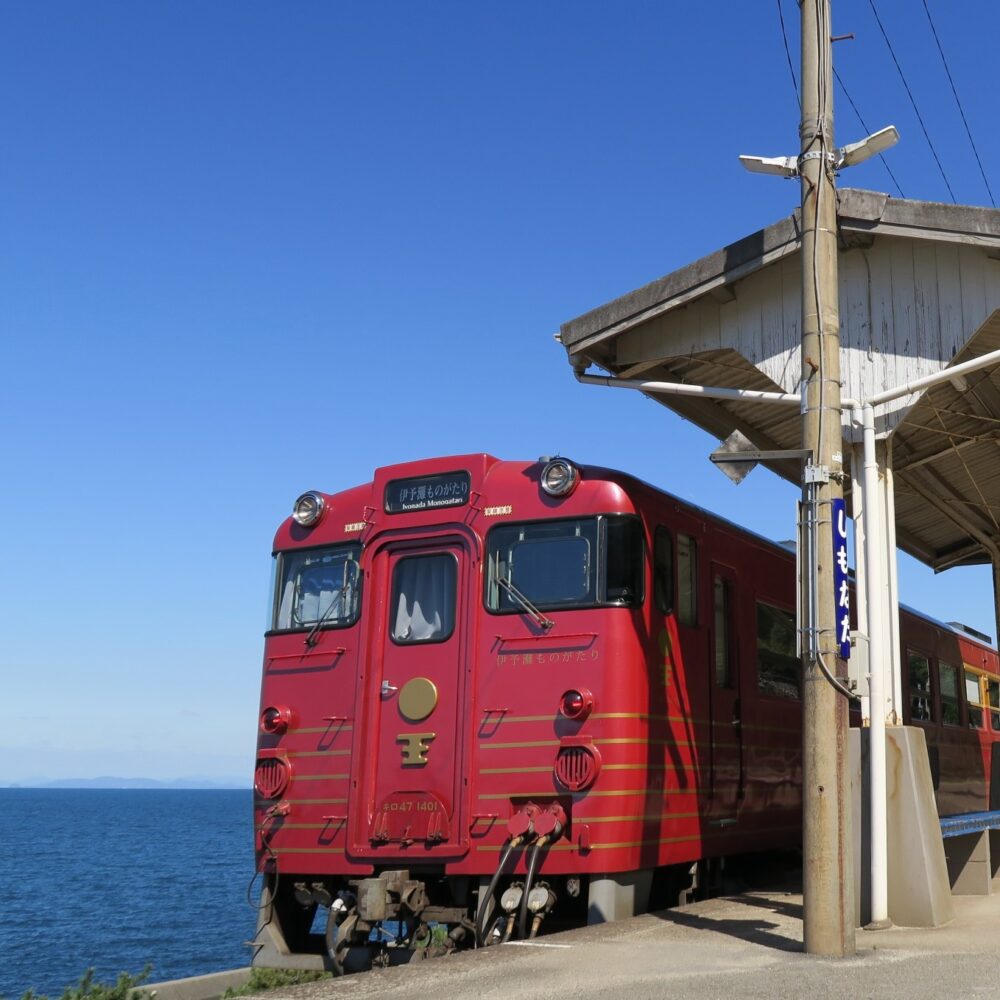
Table of contents
1: Introduction
2: How to create a model route
3: Recommendations for traveling to rural areas
4: Recommendations for rail travel
1: Introduction
Dear foreign travelers who have already been to Japan many times and would like to visit more regions of Japan!
We have created up to the 8th edition of our model routes for visiting rural other than the so-called Golden Route, which only includes Tokyo, Mt Fuji, Kyoto, and Osaka. Please use them as a reference for your future itineraries. We will continue to add model routes at irregular intervals.
One-week Japan Itinerary for repeat visitors (1) (Miyagi, Iwate, Aomori, and Fukushima prefectures)
One-week Japan Itinerary for repeat visitors (2) (Hyogo, Shimane, and Osaka Prefectures)
One-week Japan Itinerary for repeat visitors (3) (Okayama, Ehime, and Hiroshima Prefectures)
One-week Japan Itinerary for repeat visitors (4) (Tokyo, Nagano, Gifu, and Toyama Prefectures)
One-week Japan Itinerary for repeat visitors (5) (Osaka, Ishikawa, and Fukui Prefectures)
One-week Japan Itinerary for repeat visitors (8) (Okayama, Kagawa, Tokushima, and Kochi Prefectures)
2: How to create a model route
The method for creating a model route for a visit to a rural is as follows.
(i) Create itineraries to/from Narita International Airport (Haneda Airport) or Kansai International Airport, which account for 70% (in 2019) of the number of foreign visitors entering Japan.
(ii) Create itineraries of six nights and seven days based on the average number of nights stayed by foreign travelers of 6.2 nights (2019).
(iii) Create an itinerary with a budget of JPY 200,000 or less, based on the average travel expenses of foreign travelers at the above three airports of JPY 176,000 (2019).
We also used our recommendation of staying in two places (3 nights each in two places for a 7-day / 6-night itinerary) as the basis for creating the itinerary, as staying in two places allows for itinerary changes in the event of bad weather. Travelers may want to visit certain places (tourist attractions) in good weather. If you set up an itinerary where you change your accommodation every day, you will not be able to change your sightseeing itinerary even in bad weather. As the weather in Japan is changeable, it is strongly recommended to create an itinerary that can be changed flexibly.

3: Recommendations for traveling to rural areas
53% of all overnight stays by foreign visitors are concentrated in the top three prefectures of Tokyo, Osaka, and Kyoto (2019, Japan Tourism Agency data). Conversely, the total number of overnight stays in the bottom 30 prefectures is only 8%. This indicates that the problem of over-tourism by foreign travelers is an issue only in popular tourist destinations such as Tokyo, Osaka, and Kyoto Prefectures.
Share of overnight stays by foreign tourists (%)
1 Tokyo 22.09 2 Osaka Prefecture 16.71 3 Kyoto Prefecture 13.84 4 Hokkaido 8.93 5 Okinawa Prefecture 8.93 6 Chiba Prefecture 3.92 7 Kanagawa Prefecture 2.42 8 Fukuoka Prefecture 2.40 9 Yamanashi Prefecture 2.36 10 Shizuoka Prefecture 2.06 11 Gifu Prefecture 1.83 12 Nagano Prefecture 1.43 13 Aichi Prefecture 1.41 14 Oita Prefecture 1.21 15 Hyogo Prefecture 0.90 16 Ishikawa Prefecture 0.88 17 Kumamoto Prefecture 0.69 18 Nara Prefecture 0.66 19 Wakayama Prefecture 0.66 20 Hiroshima Prefecture 0.61 21 Nagasaki Prefecture 0.59 22 Kagoshima Prefecture 0.54 23 Kagawa Prefecture 0.54 24 Niigata Prefecture 0.40 25 Shiga Prefecture 0.40 26 Iwate Prefecture 0.32 27 Mie Prefecture 0.31 28 Tochigi Prefecture 0.30 29 Gunma Prefecture 0.29 30 Miyazaki Prefecture 0.26 31 Toyama Prefecture 0.25 32 Aomori Prefecture 0.24 33 Saga Prefecture 0.21 34 Miyagi Prefecture 0.20 35 Yamagata Prefecture 0.19 36 Okayama Prefecture 0.16 37 Fukushima Prefecture 0.14 38 Tokushima Prefecture 0.10 39 Ehime Prefecture 0.10 40 Akita Prefecture 0.10 41 Tottori Prefecture 0.10 42 Shimane Prefecture 0.08 43 Kochi Prefecture 0.07 44 Yamaguchi Prefecture 0.06 45 Fukui Prefecture 0.06 46 Saitama Prefecture 0.03 47 Ibaraki Prefecture 0.03 Total 100.00
Comparison of the share of overnight stays by prefecture (%, share of foreign overnight stays / share of Japanese overnight stays)
1 Tokyo 267 2 Osaka Prefecture 251 3 Kyoto Prefecture 119 4 Fukuoka Prefecture 38 5 Hokkaido 33 6 Gifu Prefecture 20 7 Yamanashi Prefecture 10 8 Okinawa Prefecture -2 9 Aichi Prefecture -6 10 Nara Prefecture -21 11 Oita Prefecture -26 12 Kagawa Prefecture -31 13 Kanagawa Prefecture -36 14 Kumamoto Prefecture -37 15 Hiroshima Prefecture -38 16 Chiba Prefecture -44 17 Miyazaki Prefecture -55 18 Wakayama Prefecture -56 19 Saga Prefecture -56 20 Nagasaki Prefecture -56 21 Ishikawa Prefecture -56 22 Kagoshima Prefecture -58 23 Shizuoka Prefecture -59 24 Toyama Prefecture -60 25 Aomori Prefecture -61 26 Shiga Prefecture -65 27 Iwate Prefecture -70 28 Nagano Prefecture -71 29 Hyogo Prefecture -71 30 Tokushima Prefecture -75 31 Okayama Prefecture -77 32 Niigata Prefecture -82 33 Ehime Prefecture -82 34 Akita Prefecture -83 35 Yamagata Prefecture -83 36 Mie Prefecture -83 37 Tottori Prefecture -86 38 Kochi Prefecture -86 39 Miyagi Prefecture -87 40 Shimane Prefecture -88 41 Gunma Prefecture -88 42 Tochigi Prefecture -88 43 Yamaguchi Prefecture -90 44 Saitama Prefecture -91 45 Fukui Prefecture -93 46 Fukushima Prefecture -93 47 Ibaraki Prefecture -96
When I travel abroad, I prefer to go to places where there are as few Japanese as possible to enjoy the exotic atmosphere. I would like foreign travelers to go to rural areas of Japan where there are as few foreigners as possible so that they can enjoy the unique Japanese atmosphere. One of the main attractions of traveling to rural areas is that you can encounter a unique food culture and warm human touch that you cannot find in big cities.
In addition, the Japan Tourism Agency’s survey (2019) on what people did when traveling to Japan (multiple answers) showed that 73.4% of respondents said they did “Nature and scenic sightseeing”, 29.7% “Experienced Japanese history and traditional culture”, 20.5% “Experienced Japanese daily life”, 14.6% “Experienced the four seasons (cherry blossom viewing, autumn leaves, snow, etc)”, 7% “Nature experience tour and farming and fishing village experience” A total of 148.6% of respondents said that they would be more likely to experience sightseeing in the countryside if they traveled to the countryside. In the ‘Things I would like to do on my next trip to Japan (multiple answers)’ category, the above item total rises to 154.8%. Thus, it seems that foreign visitors’ interest in regional tourism is also increasing.
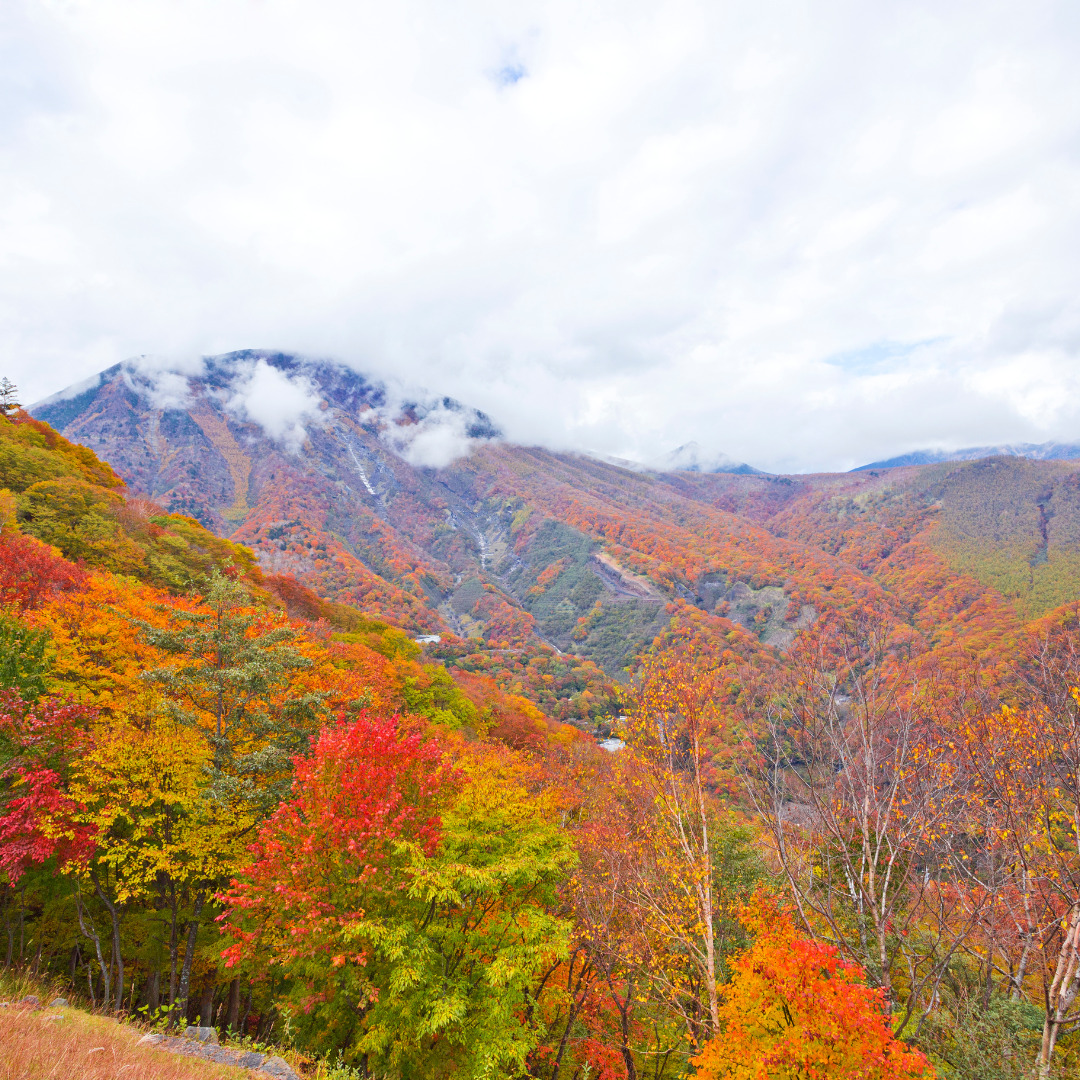
Repeat visitors to Japan have already started going to the countryside. It is clear that foreign visitors who visit Japan more frequently tend to stay in more prefectures. It is likely that repeat visitors to Japan are tired of the golden route of just Tokyo, Mt Fuji, Kyoto, and Osaka, and are visiting the countryside.
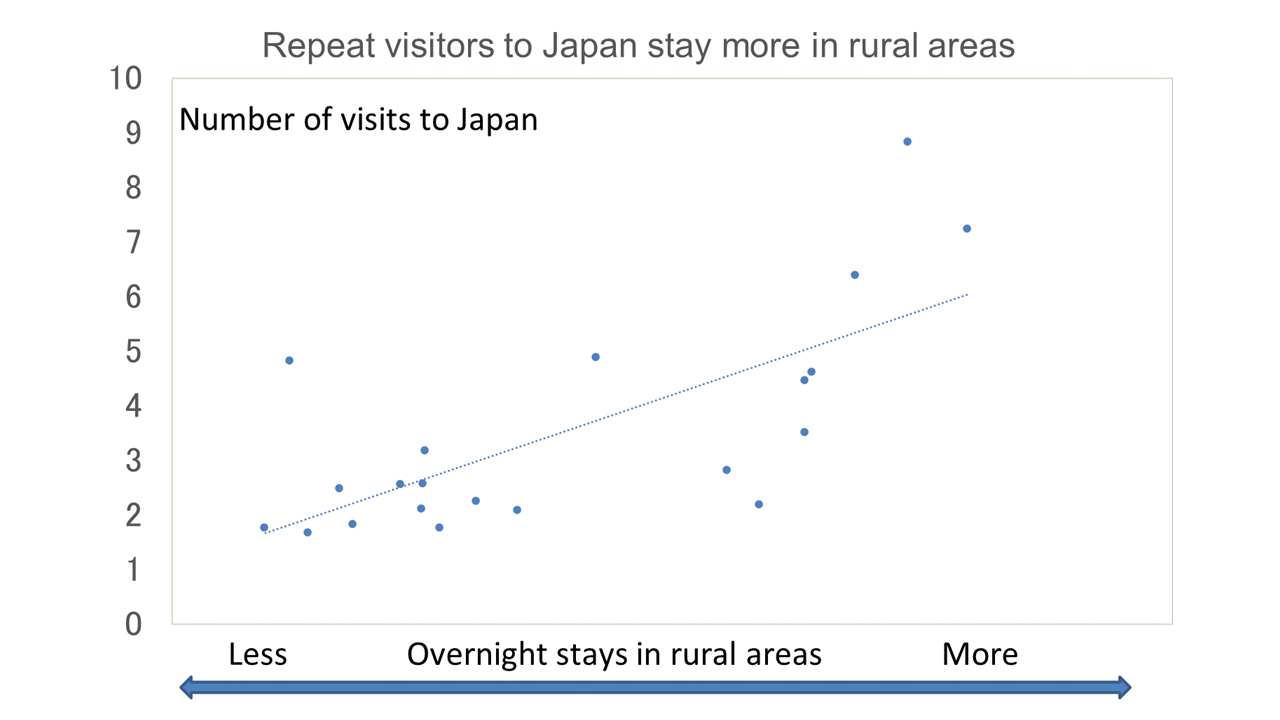
The share of stays by a prefecture for Taiwanese travelers, who have visited Japan an average of 7.2 times, exceeds that of Japanese travelers in 14 prefectures. It is also notable that only Taiwanese exceeded the share of Japanese travelers in six prefectures – Okayama, Aomori, Iwate, Toyama, Miyagi, and Saga – where the share of foreign travelers as a whole is less than half that of Japanese travelers.
Comparison of the share of overnight stays by prefecture (%, share of Taiwanese overnight stays / share of Japanese overnight stays)
1 Fukuoka Prefecture 190 2 Tokyo 164 3 Osaka Prefecture 136 4 Aichi Prefecture 84 5 Hokkaido 57 6 Kagawa Prefecture 54 7 Okinawa Prefecture 47 8 Okayama Prefecture 45 9 Aomori Prefecture 44 10 Kumamoto Prefecture 44 11 Iwate Prefecture 25 12 Toyama Prefecture 17 13 Miyagi Prefecture 14 14 Saga Prefecture 14 15 Kyoto Prefecture -2 16 Gifu Prefecture -14 17 Shiga Prefecture -17 18 Yamanashi Prefecture -18 19 Miyazaki Prefecture -21 20 Ishikawa Prefecture -22 21 Ehime Prefecture -22 22 Kagoshima Prefecture -26 23 Akita Prefecture -32 24 Oita Prefecture -34 25 Hyogo Prefecture -35 26 Hiroshima Prefecture -39 27 Yamagata Prefecture -39 28 Chiba Prefecture -39 29 Nagano Prefecture -49 30 Nagasaki Prefecture -50 31 Ibaraki Prefecture -63 32 Gunma Prefecture -64 33 Kochi Prefecture -65 34 Kanagawa Prefecture -66 35 Niigata Prefecture -69 36 Tokushima Prefecture -70 37 Saitama Prefecture -71 38 Tottori Prefecture -78 39 Wakayama Prefecture -79 40 Fukushima Prefecture -80 41 Yamaguchi Prefecture -80 42 Shimane Prefecture -81 43 Fukui Prefecture -83 44 Mie Prefecture -84 45 Nara Prefecture -84 46 Shizuoka Prefecture -85 47 Tochigi Prefecture -86
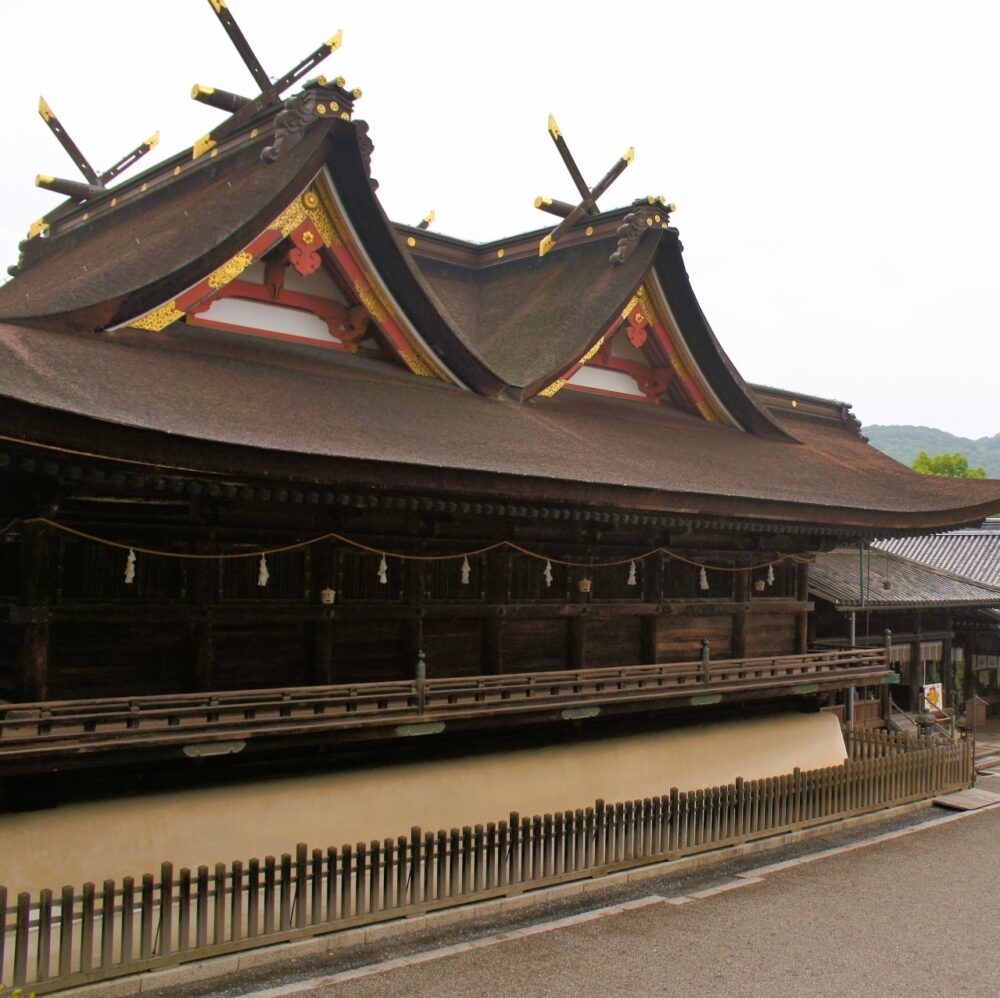
The share of stays by a prefecture for Hong Kong travelers, who have visited Japan an average of 8.8 times, exceeds that of Japanese travelers in 12 prefectures. It is also notable that only Hong Kong residents exceeded the Japanese share in five prefectures – Kagoshima, Miyazaki, Okayama, Tokushima, and Tottori – which have less than half the share of Japanese overnight stays among foreign visitors as a whole.
Comparison of the share of overnight stays by prefecture (%, share of Hong Kong people overnight stays / share of Japanese overnight stays)
1 Fukuoka Prefecture 279 2 Osaka Prefecture 270 3 Tokyo 212 4 Kagoshima Prefecture 150 5 Aichi Prefecture 100 6 Miyazaki Prefecture 63 7 Hokkaido 57 8 Kagawa Prefecture 47 9 Kumamoto Prefecture 32 10 Okayama Prefecture 30 11 Tokushima Prefecture 25 12 Tottori Prefecture 3 13 Okinawa Prefecture -4 14 Oita Prefecture -12 15 Gifu Prefecture -14 16 Aomori Prefecture -21 17 Yamanashi Prefecture -22 18 Wakayama Prefecture -24 19 Toyama Prefecture -25 20 Ehime Prefecture -27 21 Saga Prefecture -30 22 Kyoto Prefecture -30 23 Hiroshima Prefecture -33 24 Nagasaki Prefecture -36 25 Ishikawa Prefecture -38 26 Shiga Prefecture -44 27 Kochi Prefecture -49 28 Hyogo Prefecture -53 29 Nagano Prefecture -66 30 Niigata Prefecture -69 31 Kanagawa Prefecture -71 32 Saitama Prefecture -71 33 Chiba Prefecture -71 34 Iwate Prefecture -72 35 Fukui Prefecture -74 36 Nara Prefecture -74 37 Shimane Prefecture -76 38 Miyagi Prefecture -77 39 Mie Prefecture -79 40 Yamagata Prefecture -79 41 Akita Prefecture -80 42 Ibaraki Prefecture -81 43 Gunma Prefecture -85 44 Shizuoka Prefecture -87 45 Yamaguchi Prefecture -89 46 Tochigi Prefecture -90 47 Fukushima Prefecture -95
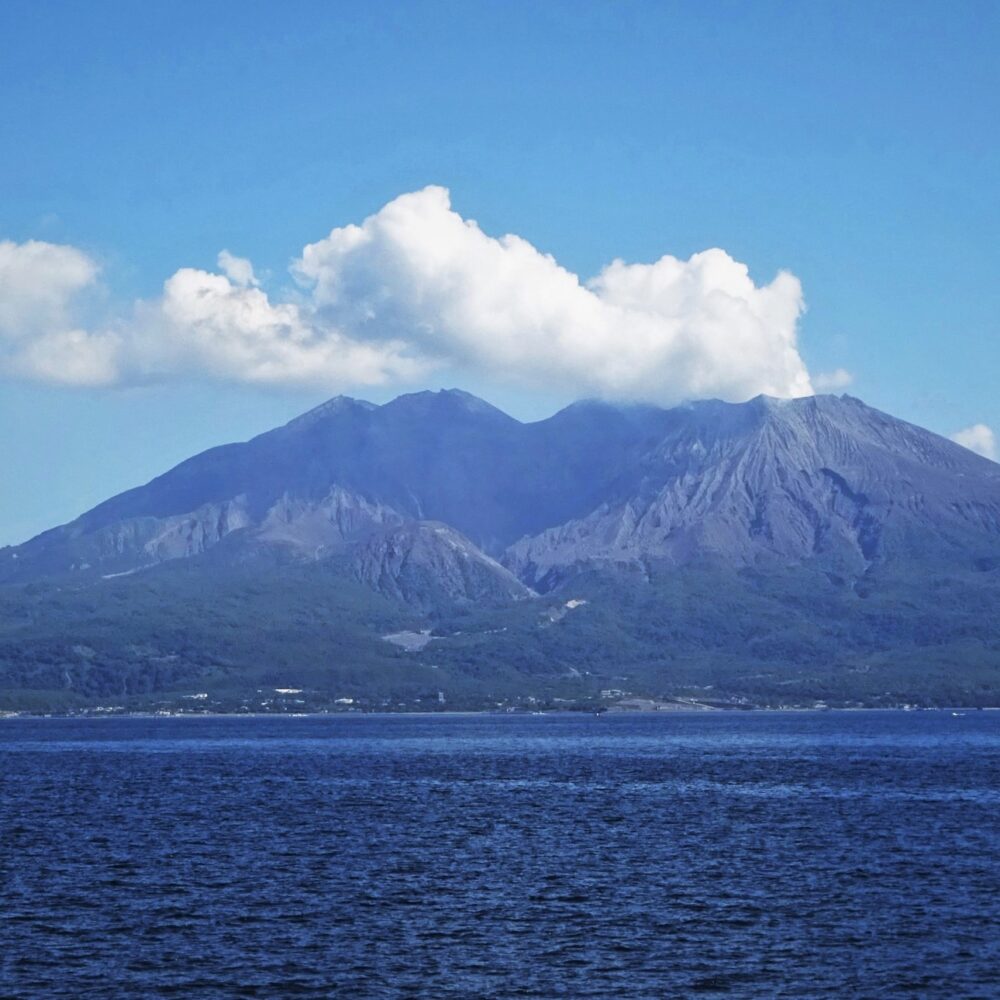
Even repeat visitors to Japan, such as Taiwanese and Hong Kongers, account for less than half of the Japanese overnight share in 18 and 20 prefectures respectively. There is still a great deal of room for rural tourism.
4: Recommendations for rail travel
Train travel is a great way to visit rural areas. Eating an Ekiben (lunch box sold at train stations) with a view of the countryside and drinking sake (local sake), Japanese wine, or craft beer by train is a pleasure that cannot be experienced if you drive a rental car. Also, the rush hour crowds in the big cities are virtually non-existent on local trains.
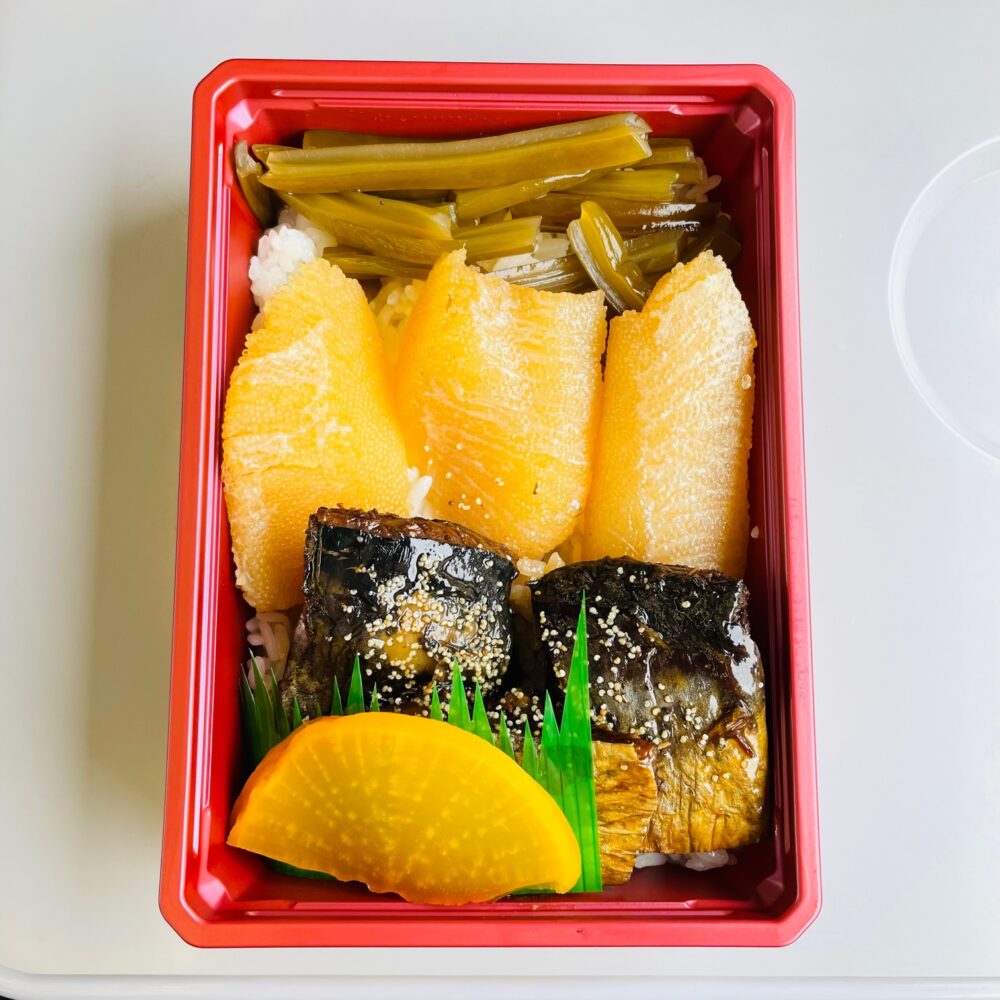
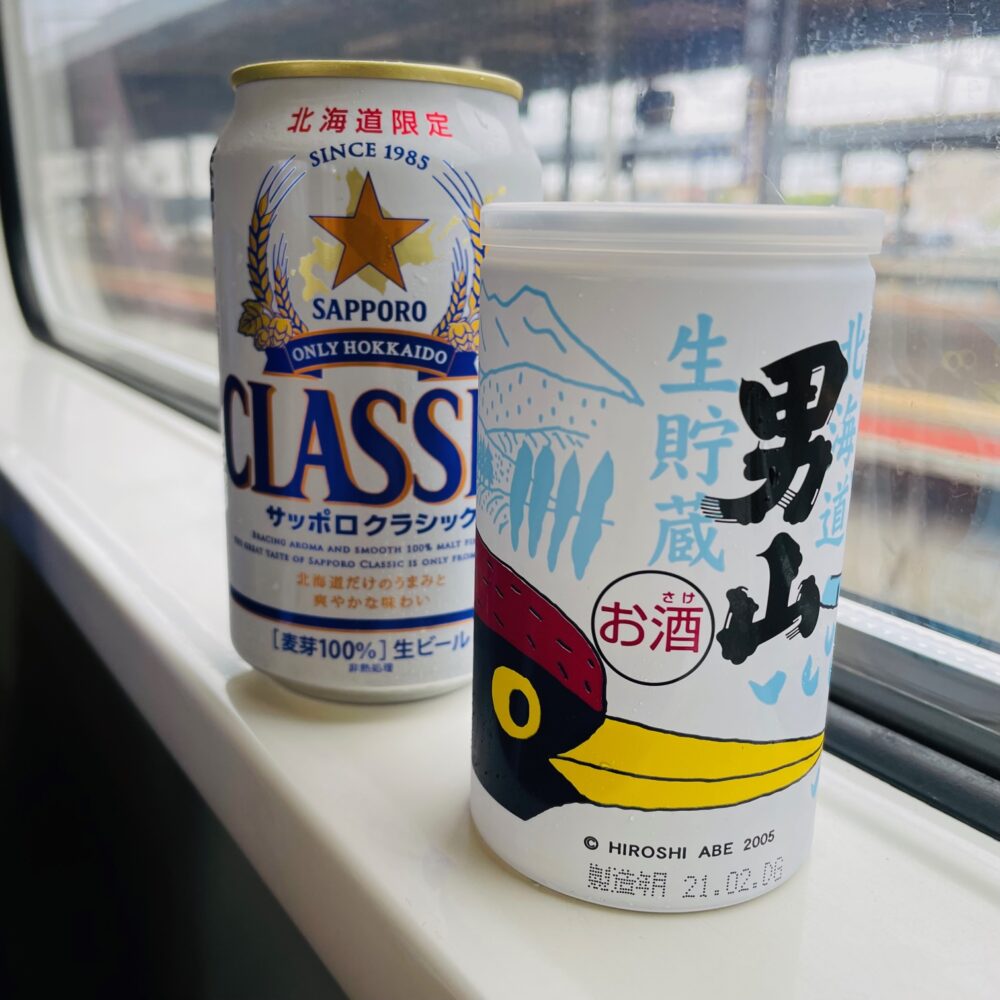
Furthermore, rail travel is a practice of sustainable tourism. According to 2019 data from the Ministry of Land, Infrastructure, Transport, and Tourism, the CO2 emissions per kilometer traveled by one person are 98 g (75% of car emissions) for airplanes, 57 g (44%) for buses, and 17 g (13%) for trains, compared to 130 g for cars.

The most important issue to be considered when traveling by rail in rural areas is how to get on and off one-man-operated trains. On one-man-operated trains, you have to press a button to open the door yourself when getting on and off. In many cases, a numbered ticket is taken when boarding the train, and the ticket and the fare are placed in the fare box before getting off the train.
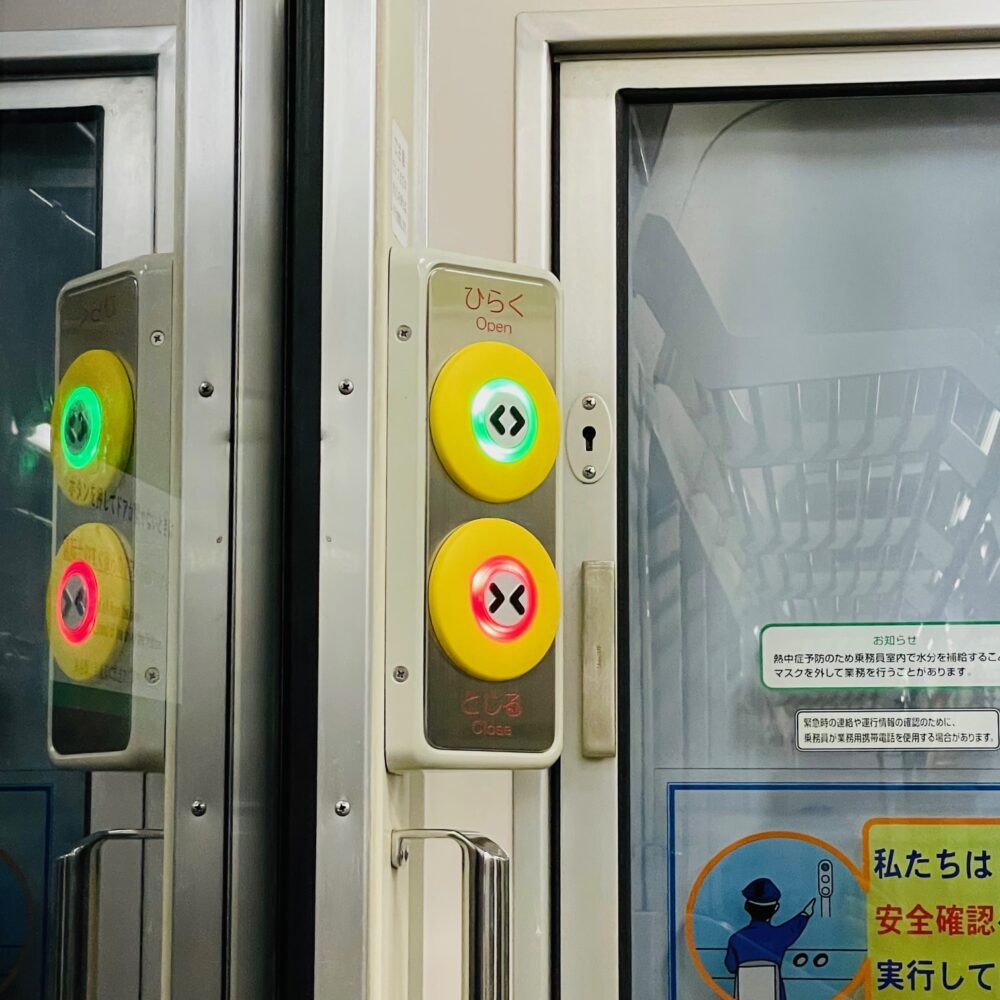
For one-man-operated trains, it is safer to always ride in the first car. When traveling in rural areas of Japan, train boarding and alighting rules should be remembered. However, whether to get on through the front or rear door of the first car depends on the train operator.
Please understand these precautions and enjoy your regional travel in Japan by train!

We are planning to start a travel rental service next spring to make it easier for you to travel around the country without bringing any luggage. Until the rental service is launched, we will provide itinerary creation free of charge. Until the rental service is launched, we will provide itinerary creation free of charge to only the first 10 customers.
I have traveled a cumulative total of more than 200 times, almost every two months, both domestically and internationally, and have created many itineraries. In addition, our company has already compiled a database of more than 20 000 tourist destinations in Japan. We can create itineraries according to travelers’ preferences, so if you wish, please contact us via “Registration / Inquiries.”